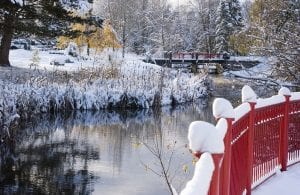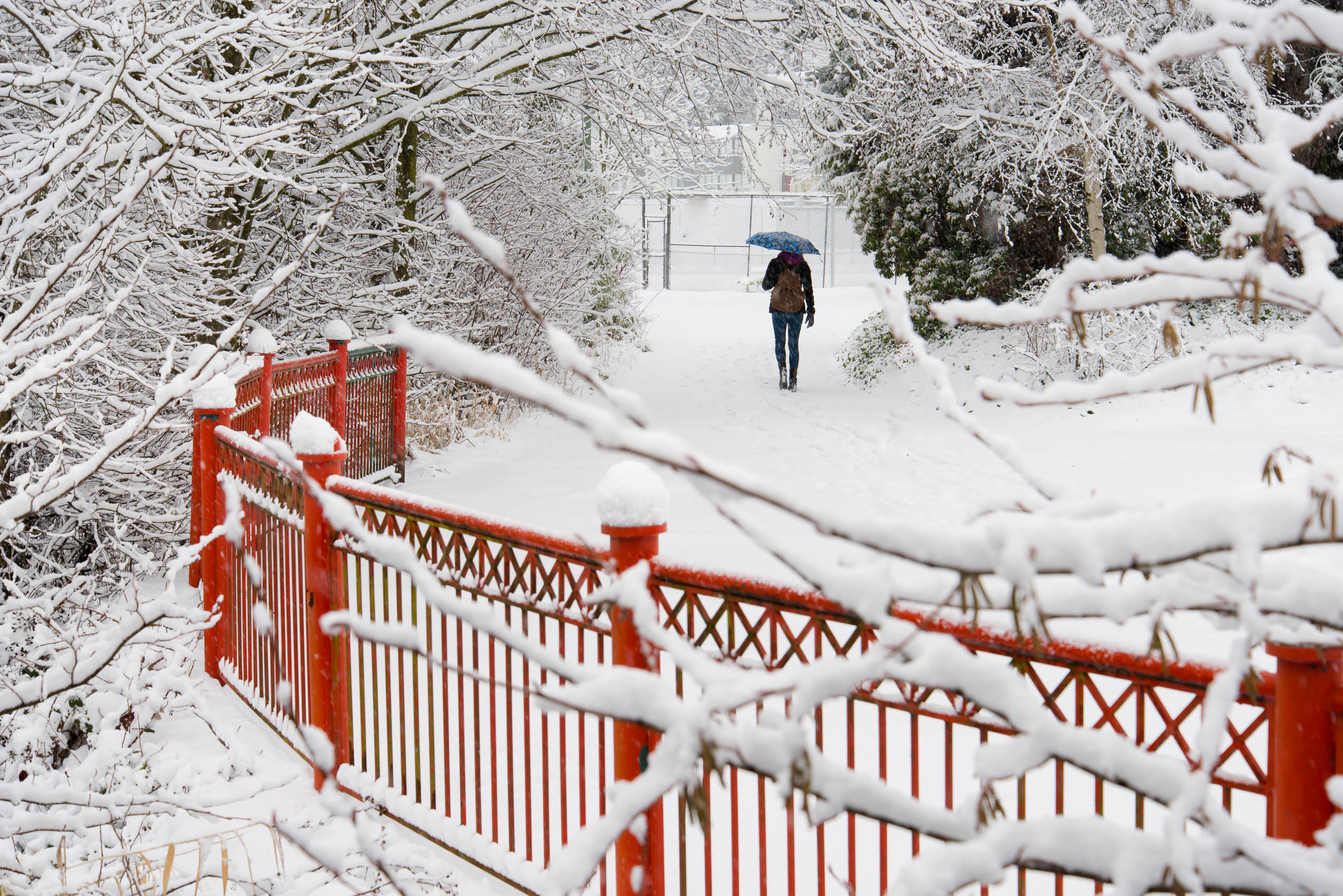Many will remember the day-to-day effects of the snow and ice that blanketed Lower Mainland streets in 2016 and 2017 . However, icy roads and sidewalks don’t just impact pedestrians and drivers; increased amounts of road salt resulting from extreme winter events also have downstream effects on the health of local ecosystems.
Increased salt concentration affects fish, invertebrates, plankton, water fowl and plant life, making downstream lakes more susceptible to harmful algae while also creating habitat for invasive species.
A commitment to protecting waterways

With Guichon Creek running right through the Burnaby campus, BCIT’s Facilities Services pays close attention to the risks that sodium chloride (salt) run-off poses to watersheds and soil. Increased salt concentration affects fish, invertebrates, plankton, water fowl and plant life, making downstream lakes more susceptible to harmful algae while also creating habitat for invasive species.
“We’re fortunate to have such a unique green space on our campus,” explains Adam Dickinson, Supervisor for landscape grounds and fleet operations.
“We have forested areas, and a creek system tied into further waterways downstream from us, so we have to do our part to help keep that safe.”
The department has worked with a consulting service to develop a three-pronged “snow plan” that can dramatically reduce salt usage. The plan involves a liquid brine technology applied before a snow or ice event to prevent the formation of frost, ice, and hard packed snow as well as pre-wetted salt and a non-chloride potassium based liquid de-icer.
Benefits beyond water
Dickinson estimates that the old system required a pre-event application of 20 tons of rock salt to cover all campus road and parking areas. In contrast, the new brine application process requires only 3 tons to cover the same area.

The new system has additional benefits on indoor infrastructure and campus landscaping. The brine prevents salt from bouncing into landscaped areas, riparian systems, and from entering the storm system. In areas near building entrances and stairways, the non-chloride ice-melt application process takes effect in just ten minutes, while also decreasing the amount of salt tracked into buildings. This further protects indoor floors and lowers the burden of salt clean up on BCIT’s custodial staff.
While ice-free sidewalks and roads may be taken for granted by many, Dickinson sees the new system as “super exciting,” something his team has invested in through new training for staff, improved equipment, and a complex planning process that helps ensure BCIT walks the talk – even in winter – when it comes to environmentally responsible practices.
Note to Media: Interview opportunities available to speak with an expert on this sustainable initiative or strategies for sustainable snow removal. Please contact Amy Chen, 778-384-7245.
This story is part of the monthly Countdown to Ecocity 2019 series, which highlights BCIT’s leadership in the face of today’s complex environment challenges. This initiative supports the Ecocity Standard for Clean and Safe Water, in which city water sources, waterways, and water bodies are healthy and function without negative impact to ecosystems.
Learn more about BCIT’s role as host of the Ecocity World Summit in 2019.
